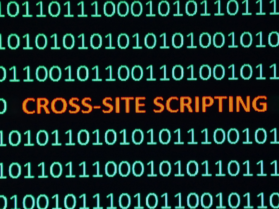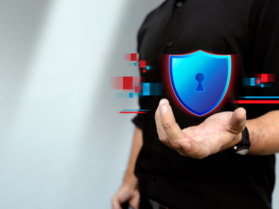Cyberattacks can be highly damaging for a company. Even a small-scale attack can lead to significant losses for your organization. Thus, recovering from a cyberattack is essential, and it might take just a few weeks to months. According to Cisco, the cybercrime cost will increase to $10.5 billion by 2025.
When you know the damage is done but are stuck on what to do next, you need an effective plan. Imagine waking up randomly and thinking: your business has been halted. You're in a dilemma about what's going on, unable to log into the system, having daunting messages, encrypted files, and more. It's devastating to fall victim to a cyber-attack; whether it's malware or ransomware, it can be disruptive. The cyberattacks disturb overall business operations and lead to loss of customers' trust and brand reputation.
If you're concerned about the next step, this article is tailored for you! We'll delve into the steps to recover from these cyberattacks. But first, it's crucial to familiarize yourself with the various types of cyberattacks. This knowledge will empower you to identify the attack you're facing and respond promptly. Let's begin.
Different Types of Cyberattacks
Malware
This is harmful software that includes viruses, trojans, and more. It can enter your network through the weak points and steal information from there.
Ransomware Attack
A ransomware attack occurs when malicious software encrypts your data and makes it inaccessible until the attackers pay a ransom. The downside is that ransomware attacks can cause significant financial, reputational, and other losses.
Phishing Attacks
A phishing attack is a social engineering attack that aims to steal user information, such as credit card numbers and login credentials. It impersonates legitimate entities.
Distributed Denial-of-Service Attack (DDoS)
This attack occurs when the attacker floods a server with internet traffic to prevent users from accessing online services.
Data Recovery is Crucial: Essential Strategies
Directing your attention to data recovery is paramount in restoring critical systems following a cyber-attack. Here are some data recovery strategies that individuals and organizations should adopt to protect their crucial data. These strategies are not just recommendations, but essential steps to safeguard your data.
Teaching Employees About Security
Your employees can serve as the first line of defense against cyberattacks. Regular training sessions and awareness programs can significantly reduce the likelihood of security incidents. It's crucial to educate your staff on the importance of strong passwords, identifying phishing emails, and avoiding clicking on malicious links or images. Their vigilance can make a significant difference in your organization's cybersecurity.
Prepare a Cyber Incident Response Plan
A cyber incident response plan is a document of your organization's decision in case of a cyber-attack. With the growing threat of cyber-attacks, it is essential to have one. Losing your important data can be complex, whether the danger is physical or virtual. An incident response plan in place can help you mitigate the risk and stay one step ahead of such occurrences.
Implement Data Recovery and Backup Policies
One key strategy for data backup and recovery policies is to define the scope, frequency, format, and locations of your data backups. Make sure your data backups are secure, consistent, and complete, and your data recovery is reliable and timely. You can use different tools, such as cloud storage, testing, authentication, and more.
Enhance Security Measures
Improving security is a continuous task. It involves restricting control over who can access the information, keeping software updated, maximizing network security, and more. It would help if you weren't negligent when it comes to security. For instance, make sure to regularly update your passwords and enable two-factor authentication. Additionally, consider investing in antivirus software to enhance your online protection. Incorporating robust actions can help to defend against cyber threats in the future.
Learn from the Attack
Any attack is a learning opportunity for your company. To prevent data breach attacks from happening in the future, it is essential to analyze the attack and note down the vulnerabilities. There's no way of covering up; however, all you need to do is learn and change accordingly.
Malware Scan and Removal
Perform a complete scan of the affected devices with the anti-malware and anti-virus software. Before reconnecting to the network, it is crucial to first remove any vulnerabilities or malware present in the system.
Wrapping it Up
Recovering from a cyberattack requires a strategic approach. By following the above measures, you can gain valuable insights into reducing risk and restoring data with confidence. Data is the most crucial asset for organizations; success totally depends on it. Stay secure and vigilant in the online space. To learn more about cyber-related topics, head straight to our blogs, which we publish daily!
You may also like to read:
Why Data Protection is Important for Your Organization? An In-Depth Guide
Mastering Cybersecurity in 2024: Navigating the Ever-Evolving Landscape





